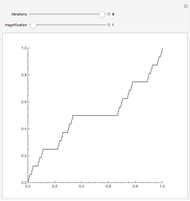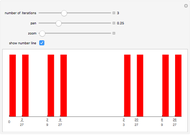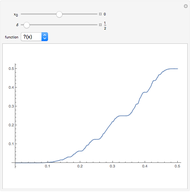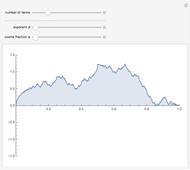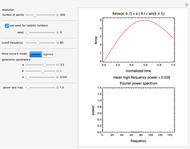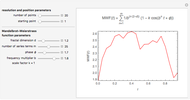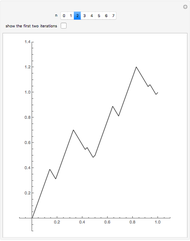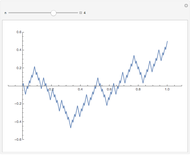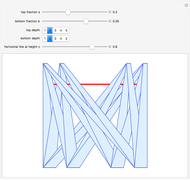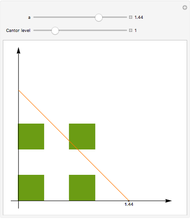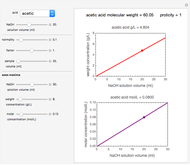Comparing Measures of Line Jaggedness

Requires a Wolfram Notebook System
Interact on desktop, mobile and cloud with the free Wolfram Player or other Wolfram Language products.
This Demonstration compares three statistical measures of line jaggedness visually and numerically. It creates and plots rugged curves with the Mandelbrot–Weierstrass function,  , of a chosen fractal dimension
, of a chosen fractal dimension  , starting point, range, and resolution, and curve-fits the data with a third- or fourth-degree polynomial. The fitted ("smoothed") curve is superimposed on the generated
, starting point, range, and resolution, and curve-fits the data with a third- or fourth-degree polynomial. The fitted ("smoothed") curve is superimposed on the generated  curve with the residuals plotted below. The residuals' standard deviation,
curve with the residuals plotted below. The residuals' standard deviation,  , and two additional jaggedness indices,
, and two additional jaggedness indices,  and
and  , having a range from 0 (perfectly smooth) to 1, are calculated and their values displayed. Also included is a plot showing these two indices' dependence on
, having a range from 0 (perfectly smooth) to 1, are calculated and their values displayed. Also included is a plot showing these two indices' dependence on  for a chosen range factor
for a chosen range factor  .
.
Contributed by: Mark D. Normand and Micha Peleg (October 2012)
Open content licensed under CC BY-NC-SA
Snapshots
Details
Snapshot 1: smooth line
Snapshot 2: moderately jagged line at high resolution
Snapshot 3: highly jagged line at high resolution
Jagged compressive force-displacement curves are the hallmark of brittle puffed cereals and snacks and other solid foams. It has been shown that these curves' degree of jaggedness is not only a measure of brittleness [1] but also of the perceived "crunchiness" or "crispness" [2]. This Demonstration generates jagged lines using the Mandelbrot–Weierstrass function,  , having a chosen fractal dimension
, having a chosen fractal dimension  , number of terms
, number of terms  , phase angle
, phase angle  , frequency multiplier
, frequency multiplier  , and scale factor
, and scale factor  , all entered with sliders. You can also choose with sliders the number of generated points and the starting point on the curve.
, all entered with sliders. You can also choose with sliders the number of generated points and the starting point on the curve.
The program curve-fits the generated data with a third- or fourth-degree polynomial model, selected with a setter bar, and superimposes the fitted curve on the generated  data. The program also calculates the residuals and displays them separately in the plot below. It then provides numerical and visual comparison of three statistical indices of line jaggedness [3], namely, the standard deviation of the residuals after curve fitting with the polynomial model
data. The program also calculates the residuals and displays them separately in the plot below. It then provides numerical and visual comparison of three statistical indices of line jaggedness [3], namely, the standard deviation of the residuals after curve fitting with the polynomial model  ,
,  , and
, and  , where
, where  is a range factor chosen with a slider. The dependence of
is a range factor chosen with a slider. The dependence of  and
and  on
on  for the chosen
for the chosen  is displayed in the bottom plot, with the actual value of
is displayed in the bottom plot, with the actual value of  and
and  at
at  shown as a moving red or blue dot, respectively. Unlike
shown as a moving red or blue dot, respectively. Unlike  , which is unbounded, and the fractal dimension
, which is unbounded, and the fractal dimension  , which has a theoretical range from 1 to 2, both
, which has a theoretical range from 1 to 2, both  and
and  have a range from 0 (perfectly smooth,
have a range from 0 (perfectly smooth,  ) to 1 (
) to 1 ( ).
).
The Demonstration lets you examine how the statistical jaggedness parameters ( ,
,  , and
, and  ) are affected by the curve's inherent jaggedness, as expressed by its fractal dimension, and the resolution, which can be altered by adjusting other parameters (primarily
) are affected by the curve's inherent jaggedness, as expressed by its fractal dimension, and the resolution, which can be altered by adjusting other parameters (primarily  and
and  ).
).
Although the indices were originally proposed for the characterization of the compressive force-displacement curves of brittle foods, they could also be used for jagged line signatures that might be encountered in other fields.
References
[1] M. G. Corradini and M. Peleg, "Solid Food Foams," Properties of Food Cellular Solids and Food Composites (J. M. Aguillera and P. Lillford, eds.), New York: Springer, 2007 pp. 169–202.
[2] T. Suwonsichon and M. Peleg, "Instrumental and Sensory Detection of Simultaneous Brittleness Loss and Moisture Toughening in Three Puffed Cereal Products," Journal of Texture Studies, 29(3), 1998 pp. 255–274. dx.doi.org/doi:10.1111/j.1745-4603.1998.tb00169.x.
[3] M. Peleg, "Line Jaggedness Measures and Their Applications in Textural Evaluation of Foods," Critical Reviews in Food Science and Nutrition, 37, 1997 pp. 491–518.
Permanent Citation










